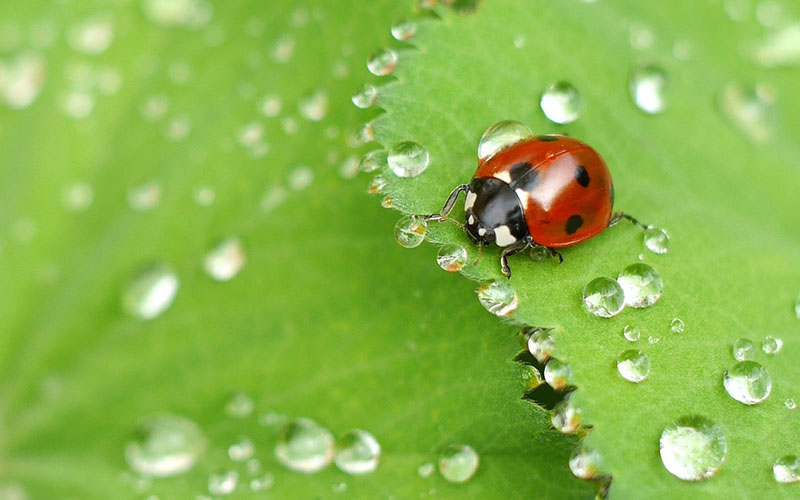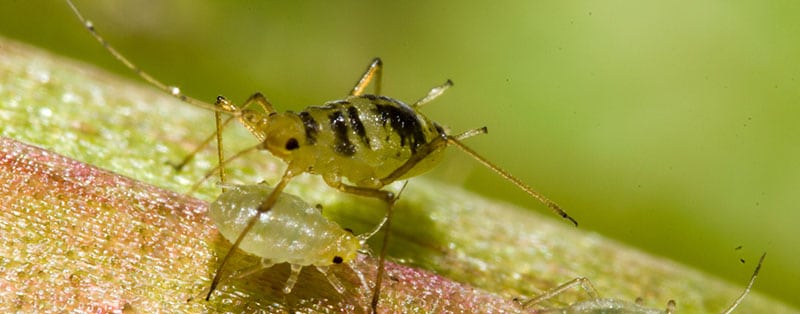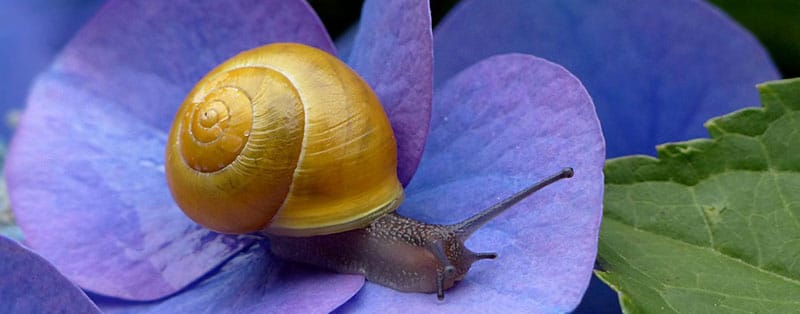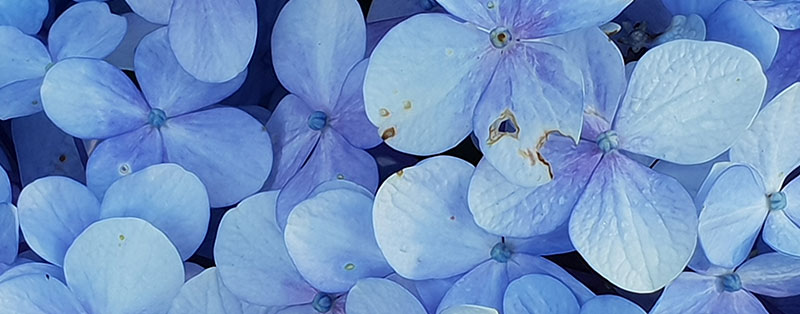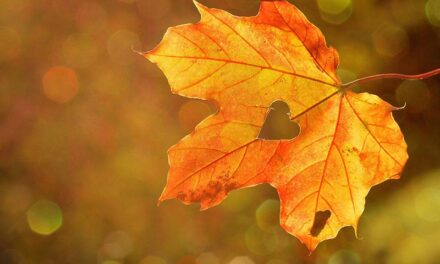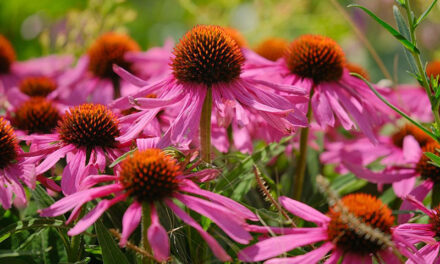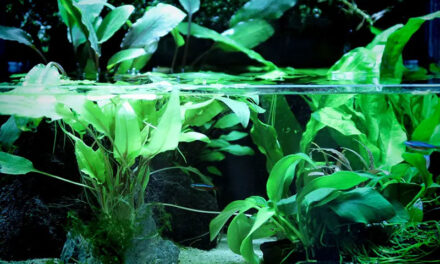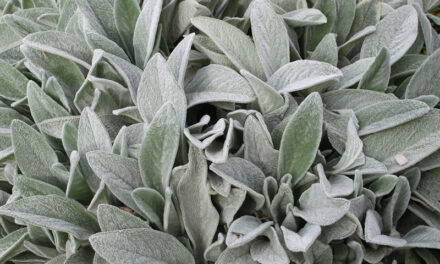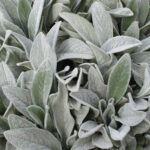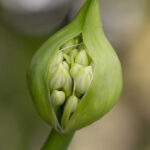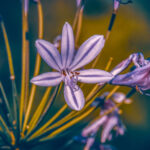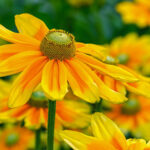In general, the Hydrangea is not very sensitive to damage from pests and diseases. As long as you give the plant enough food, compost and water it is unlikely to get sick. However, if you give too much food the plant will grow too fast, causing the stems to become too weak and there will be a greater chance of damage.
Hydrangea Diseases
A number of well-known, common diseases and pests of the Hydrangea are:
- Woolly aphid or woolly scale or mealybug
- Aphids
- Spider mite
- Trips
- Snails
- Vine-weevil
- Combustion
- Deficiency symptoms
Mealybug Hydrangea
The mealybug is also known as woolly scale or woolly aphid. The louse can be recognised by the woolly silk on the lower part of the leaf or stem that is visible in May and June and is one of the most common Hydrangea diseases.
The adult louse lays the eggs in this woolly silk, which can be up to a thousand. When the eggs hatch, the mealybugs are light brown in color and are not very noticeable on the branches. The young aphids attack the plant by pulling the plant sap (fluid) from it. This moisture, which the plant so badly needs, is then taken away. Mealybugs in your hydrangea cause the leaves and stems to droop and the flowers to hardly come out or not at all.
Treating Wool Aphid Hydrangea
Mealybugs in your hydrangea can be treated with a chemical solution that you can spray them with. However, this is an expensive and labor-intensive job, since every lower part of the leaf needs to be sprayed on. A more ecological way of combating the woolly aphids on your hydrangea is to keep a close eye on your plant in the months of May and June. Check your hydrangea branches and foliage for a woolly nest. If you remove this nest in time, by pruning the branch or leaf, the aphids won’t be able to hatch.
The most important thing is that you act fast to avoid damage as much as possible.
Aphids
An aphid is an insect. They disrupt the growth and thus the formation of the flower and leaf. The aphid sucks the sap from the young leaves of the hydrangea. Other than the hydrangea, all other types of perennials are sensitive to aphids too. Aphids appear as dots on your leaves in the colours white, yellow, orange, green, brown and black. Because the aphids absorb more nutrients than they use, they secrete this as honeydew. This is a breeding ground for another species of aphid. Aphids have a life cycle of about 2 weeks. So they reproduce very quickly. Aphids are one of the most persistent hydrangea diseases.
Hydrangea aphids treatment
The most ecological way to repel aphids is to release ladybugs. The ladybug is a natural enemy of the aphid. A ladybug can eat up to a 100 aphids per day. The aphids can also be attacked with a strong jet of water, if the infestation is not too great yet. Spraying the plant with a decoction of nettles, garlic or elder leaves is an option, or a solution of green soap. Other than that, chemical pesticides are available at your garden center. The bottle will come with a spray cap which you can use to spray the plant until the louse is gone.
Hydrangea Spider Mites
Small, light green or yellow coloured dots and a fine spider silk on the leaf is a sign of the presence of spider mite. Spider mite is also known as spint.
How to get rid of spider mites on Hydrangea
Ecologically there are two ways to combat spider mites. Using the predatory mite works the same as the ladybug on aphids. Predatory mites (mesostigmata) are the natural enemy of spider mites and can consume up to 5 to 10 spider mites or 20 spider mite eggs per day. The second way is to apply a solution of soap or insecticidal soap, which you spray on the lower part of the leaf where the spider mite is located. In addition to the ecological solution, there will also be a remedy available in the garden center which can help you get the insects out of your plant.
Thrips
I was not familiar with this term as the insects are better known as thunderbugs or thunder flies. They feed themselves by puncturing cells on the leaf and sucking up the content, this practise leaves silver-grey spots behind. Infestations like these can be found the most on hydrangeas in your house or in a greenhouse.
Treatment Thrips
Treating the thrips is similar to that of the spider mites. The ecological treatment is done by using its natural enemy, the predatory mite. Or you spray a mixture of soap or insecticidal soap on the leaves of the plant. There are pesticides available in your garden center for more artificial control.
Snails in Hydrangea
Snails love young leaves and young flowers like for your hydrangeas for example. In case you don’t see them at first, you can still recognise them with the slime trail they leave behind. There is a distinction between 2 types of snails: slugs and snails with a house/shell on top. Snails are hermaphroditic, so mating snails can fertilize each other. They are mainly active at night as they dry out in the sun. With their radula, a kind of rasp tongue, they scrape plant particles from the leaf to consume.
Treating Snails
The most ecological way is, to tackle the snail as soon as you see the first one. The best practise is to look for them after sunset. In case you do like the snails in your garden, you can create a barrier around your plants. They can only reach places where they can slide, which won’t be possible on a loose and coarse surface. The natural enemies of the snail are beetles, shrews, hedgehogs and birds. You can chemically remove the snails from your garden by spreading slug pellets.
(Black) Vine Weevil
The vine weevil can cause a lot of damage to your plant. The insect grows up to a centimeter and is active late at night. The infestation is not just caused by the bites they take from the leaf, but also by the female weevils laying their eggs in the ground. When the eggs hatch, the larvae start feeding on the roots of the plant.
Treating Vine Weevil
You can treat the vine weevil from May to July and the larva from the beginning of July. Ecologically you can treat them by letting their natural enemies do their job, which are the birds, moles, chickens, ground beetles, hedgehogs and shrews. You can use nematodes against the larvae. Chemically treating the vine weevil is done by spraying the plant and for the larvae by adding pesticides to the soil where the larvae are located.
Spots on hydrangea leaves
During sunny and very hot days, the leaves of hydrangeas that are in the hot sun in the hottest part of the day can burn. This will mainly happen on the sides of the leaf with a brown edge. This can only be noticed a few days after the combustion. You can prevent burning symptoms of your hydrangea by protecting your plant from the sun by keeping them in the shadow of a parasol for example. The most effective way is to plant the hydrangea in the right place so it is naturally in the shade during the hottest and sunniest part of the day. This way you prevent your hydrangea from burning, so better be safe than sorry.
Hydrangea leaves disease
Leaf diseases in the hydrangea are mainly due to various deficiencies, like iron or magnesium.
Yellow Hydrangea leaves
Iron deficiency can be recognised by the leaf that turns yellow between the veins. In the worst case, the entire leaf may turn completely white. Due to a lack of chlorophyll, photosynthesis stagnates, which inhibits the growth of the plant. There might be some iron present in the soil, but unable to be absorbed by the plant. The soil is then not acidic enough.
The best way to tackle this hydrangea leaf disease is to lower/acidify the pH value of the soil by adding acidic, organic material such as pine bark around the hydrangea. Another option is to spray the plants with iron chelate, which is a short term solution.
Another reason your hydrangea might turn yeallow is magnesium deficiency. The leaves turn yellow between the veins and on the edges. This happens especially during humid weather. If you want to be able to apply the right solution, you will have to measure the soil to find out whether there is an iron or magnesium deficiency. Magnesium deficiency is caused by a too low pH value. You can treat this by sprinkling dolomite lime or chemically by adding a solution of epsom salt.
Hydrangea leaves turning brown
Another form of hydrangea diseases is night frost damage. Are the leaves of your hydrangea turning brown and curly? Then your plant may just be feeling cold. Sometimes the leaves of the hydrangea can turn brown just due to night frost damage. Provide the hydrangea plenty of water so that it can recover easily. The blooming of the hydrangea might suffer, so prepare yourself for slightly fewer flowers.
Hydrangea leaves drooping
Are your hydrangeas leaves drooping? Then water them with a generous amount and you will see them bloom again. If you notice that the flowers are already drying out or turning brown, then it’s probably too late to save the blooms. But, don’t give up; keep giving the hydrangea enough water, so you can at least save the plant and have a beautifully blooming hydrangea in the next season.
If it is really hot, you can protect your hydrangea by keeping them under the shade with a parasol. This way the soil remains moist and your drooping hydrangea will be able to recover well.

